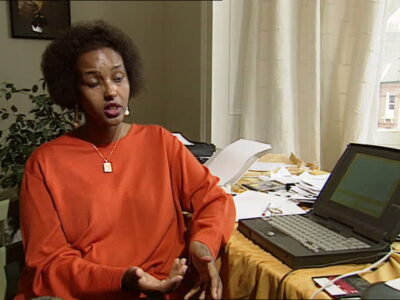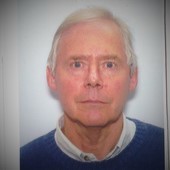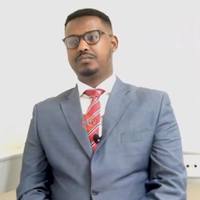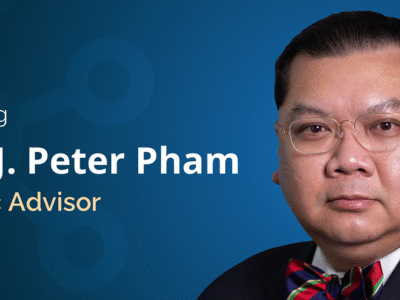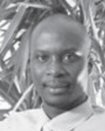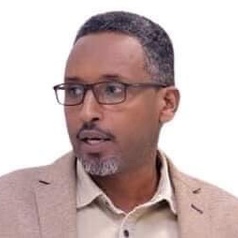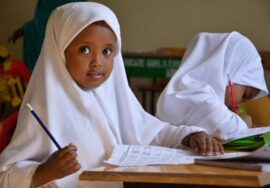Somaliland: The Strains of Success
- Overview
Somaliland’s hybrid system of tri-party democracy and traditional clan-based governance has enabled the consolidation of state-like authority, social and economic recovery and, above all, relative peace and security but now needs reform. Success has brought greater resources, including a special funding status with donors – especially the UK, Denmark and the European Union (EU) – as well as investment from and diplomatic ties with Turkey and the United Arab Emirates (UAE), though not inter- national recognition. It is increasingly part of the regional system; ties are especially strong with Ethiopia and Djibouti. Given the continued fragility of the Somalia Federal Government (SFG), which still rejects its former northern region’s independence claims, and civil war across the Gulf of Aden in Yemen, Somaliland’s continued stability is vital. This in turn requires political reforms aimed at greater inclusion, respect for mediating institutions (especially the professional judiciary and parliament) and a regional and wider internationally backed framework for external cooperation and engagement.
Successful state building has, nevertheless, raised the stakes of holding – and losing – power. While Somaliland has remained largely committed to democratic government, elections are increasingly fraught. Fear of a return to bitter internal conflict is pushing more conservative politics: repression of the media and opposition, as well as resistance to reforming the increasingly unsustainable status quo. Recurrent political crises and delayed elections (now set for March 2017) risk postponing much needed internal debate. The political elites have a limited window to decide on steps necessary to rebuild the decaying consensus, reduce social tensions and set an agenda for political and institutional reform.
Stronger executive government has driven a shift from government through clan- based consensus to ostensible democratisation, but it has not widened participation of individuals (distinct from their clan-base), or developed strong institutional checks and balances. There is a growing perception that the Isaaq clan dominates, while its sub-clans jockey for primacy through control of particular political parties, government institutions and big businesses. The government’s inclination to rely on a close-knit group of advisers identified with particular clans and regions rather than non-partisan state institutions, feeds a growing sense of marginalisation among certain constituencies both in the centre and the peripheries. Poor public services and high unemployment (the few available jobs are obtained through patronage) leave the overwhelmingly
young population, many of whom emigrate, vulnerable to religious extremism and criminality.
Militarised rule in the restive and previously lightly “occupied” eastern borderlands with Puntland (a “semi-autonomous” federal state of Somalia) – specifically the regions of Sool, Sanaag and southern Toghdeer – is not new but has become the default setting. The presence and degree of popular acceptance of more conservative Islamist government and society has grown. The government’s soft approach to extremists in its midst is more evident following terrorist attacks with alleged links back to Somaliland in neighbouring Djibouti and Puntland and the existence of a discreet Al-Shabaab presence across the country.
In the short term, especially now that elections are postponed, the government and its international supporters must find ways to support greater dialogue between political parties and key interest groups, particularly parliament’s upper House of Elders (the Guurti) and the business community, or risk further fragmentation of au- thority. This requires national consultation over the election (or reselection) of the
Guurti, the parliament’s upper house; the 2001 constitution calls for its election every six years, but it remains largely unchanged since 1997. The over-used constitutional contingency clause that allows the Guurti to rule on election postponement in the interests of “stability” should be urgently reviewed.
The newly reformed judiciary needs public backing from the government, opposition and the Guurti, especially respecting its constitutionally-defined responsibilities to support the institutions charged with delivering free and fair elections and to re- solve disputes. Greater transparency is also needed, to prevent further politicisation of the small, fragile economy and increase government accountability. The House of Representatives should be free to exercise constitutional oversight of public-private development contracts and potential conflicts of interest.
Somaliland also needs to renew commitment to talks with the SFG, despite political risks, not least in recognition of the intimate clan and familial ties that still bind its elites and population in multiple ways to Puntland and the SFG as a whole. These include marriage, religious networks, clan treaties that manage peace and war, politics, business and even extremist groups. Progress on security and economic cooperation and electoral preparations (2016, Somalia; 2017, Somaliland) require a better frame- work, including appropriate representation from Puntland, the region (potentially the Intergovernmental Authority on Development, IGAD) and wider international community (potentially the African Union and Gulf Cooperation Council).
- State-Building and its Shortcomings
This briefing outlines the critical pressure points in Somaliland’s state-building
project, in particular the attempts to strengthen the executive without revising the largely consensual but mediated politics that underpin its stability.1 Its “hybrid” system – a modern state superstructure, led by democratically-elected politicians, grafted onto a traditional clan-based internal government – may have reached its natural limits. Certainly peace is costly to maintain, with 52 per cent (in 2013) of the national budget spent on the security sector and social services dependent on foreign aid.
The state-building necessary for the greater stability the public, donors and re- gional neighbours expect has required a stronger executive, which is at odds with an earlier focus on egalitarianism and power sharing among clans. The political class (primarily ministers, officials and businessmen in the capital, Hargeysa) has grown more distant from and less willing to consult its constituencies.4 The dwindling in- dependence from government and popular legitimacy of the Guurti is particularly revealing of this shift away from consensual politics.5 “Modern” institutions to check abuses are not well established; the executive often interferes in the reconstituted judiciary.
A deteriorating relationship with clan elders reinforces the perception the administration is distant from the people, even in the core regions of Borama, Berbera, Hargeysa and Burco. Attempts to decentralise authority through directly elected local and municipal councils have increased formal recognition and representation of clans and sub-clans, with a proliferation of recognised and salaried “traditional” leaders, but with little improvement in local state capacity or the representation of smaller, less influential clans.
Growing concentration of power in the centre (especially Hargeysa) has widened the gap between Isaaq and other Dir clans (Gadabursi/Samaron and Cisse) in the west, and Isaaq and Harti-Darood (Dhulbahante and Warsangeli clans also present in Puntland) in the east, all of whom now fear Somaliland’s independence would further entrench Isaaq dominance. The opposition also appears less “nationally” representative. Regional weakening of traditional clan authority and parallel deepening of local clan particularism have widened splits between the four main Isaaq sub-clans (Habar Awal, Habar Jeclo, Habar Garhajis and Arab).
III. Democratic “Clanocracy”
The political settlement is based on a clan-state accommodation. Yet, for much of the first decade of de facto independence, ascribing political affiliations by clan was taboo, a silence that partially reflected bitter conflicts between Isaaq sub-clans (especially in 1992 and 1994). However, as Hargeysa’s political importance and state resources have grown, clan-based politicking has become more pronounced, tied to economic and political interests and less constrained by clan authorities. Increased competition among political elites, largely a response to perceived Habar Jeclo (Isaaq) dominance of key government positions and business interests, has led to periodic clan-based anti-government protests and political divisions. “Your position”, a 2012 local election candidate said, “is not owned by the government, but by the clan. There is no sense of loyalty to the state”.
1.Clan or Political Cartels?
Resistance to perceived Habar Jeclo dominance is especially acute within the ruling party, Kulmiye, in particular over who will be its next presidential candidate. The destabilising effect of prolonged intra-party competition played out along clan lines has become increasingly evident. When Kulmiye Chairman Musa Bixi announced on 7 May 2014 that he would stand against President Ahmed Mohamed Mohamoud “Silanyo”, youths were mobilised and petrol bombs thrown in front of the presidential palace. The capital was locked down, and the special police Rapid Response Unit was deployed. Protests spread to Borama, Burco, Gebiley and Berbera, prompting arrests of critical journalists and Bixi supporters.
The intra-Kulmiye conflict can broadly be explained as Bixi’s Sacad Muse (Habar Awal/Isaaq) pressing for their turn to lead against the president’s Habar Jeclo sub- clan, in accordance with a pact reportedly made while Kulmiye was in opposition, but it also points to sharply divergent economic and ideological interests within the ruling elite. The Sacad Muse, once content with remaining in the background, are pushing their claims to protect especially economic interests.
The power and political influence of business, whose support has always been critical to Somaliland’s success, has grown, and the line between public and private is increasingly blurred. The weak regulatory environment, including no effective taxation of large companies, private sector oversight or formal banking sector, allows a small group of entrepreneurs to dominate the economy. With government dependent on informal public-private partnerships for development and basic services, business can block higher taxes and greater regulation.
Elections are funded not only by donors but increasingly also by partisan business interests. Elites see government posts as the means to access resources and protect economic interests despite constitutional provisions against the president, vice president and immediate families engaging in business in office.21 Foreign companies bid- ding to control the Berbera port development and hydrocarbon exploration are closely linked to internal government rivalries. Business competitors are known to mobilise armed, clan-based militias to support or oppose big commercial developments.23 Attempts to privatise the Berbera oil terminal resulted in an unseemly parliamentary brawl and troop deployments.
- The Diminishing Democratic Dividend
Most Somalilanders believe regular, credible elections are critical for peace. Six polls (including one referendum) since introduction of multi-party politics in 2001 and peaceful transfers of power is an enviable record that ensures donor support and is part of the strategy to achieve international recognition. Yet, it has distracted attention away from shortcomings in the wider democratisation agenda, such as the Guurti’s overdue election, political parties’ internal rules and the judiciary’s independence.
Opposition and civil society have failed to press for greater reform and inclusion, contributing to a “culture of silence”. The result is the hybrid system’s unhealthy stasis.
Numerically significant “minority” clans in urban areas and borderlands are losing political representation, especially under majoritarian democratic politics. The tri-party system, based on the three parties with the most votes in regional council elections and meant to prevent emergence of single-(Isaaq sub-) clan-based parties in national elections, has largely reinforced overall Isaaq dominance. While it requires cross- clan coalitions, many smaller and non-Isaaq clans have seen their stake diminish.
Thus in the 2012 pre-election vetting process to select the official parties, small clan support for Xaqsoor lost out to large clan blocs; large Isaaq sub-clans now dominate both the ruling party and opposition. Violent protests erupted in Hargeysa, Xudun (Sool), Erigavo (Sanaag), Seylac and Lughaya (Awdal) after announcement of the local election results.
- Still Nascent Institutions
The Guurti is the primary institution through which small and minority clans feel represented, though long overdue for reconstitution; most members have held their seats since 1997. Its role in wrangles over postponement of presidential and par- liamentary elections, especially its unilateral 11 May decision to extend the government by 21 months, brought heavy donor criticism.31 Its authority was originally based on the “interim” 1997 constitution, including the “contingencies clauses” that allow it to postpone such elections in the event of “internal instability”. Though its resolutions can be overturned or amended by the other house or an appeal to the Supreme Court, there is reluctance to challenge a Guurti decision. Somaliland’s institutions incline toward preserving stability rather than upholding the rule of law or constitutionality, and the public, for the most part, seems to support this.
- Disquiet on the Eastern and Western Fronts
The perception that state-building is overly centralised and captured by particular clans, has produced a strong sense of marginalisation in the lightly ruled east and a more muted one in the historically better integrated west. The growing identification (and confusion) of state authority with one clan family – Somaliland with Isaaq/Dir, Puntland with Harti/Darood (and SFG with Hawiye) means administrative disputes are informed by long-standing clan relationships, including enmities. This presents opportunities for informal dialogue – which regularly happens along various channels
– and for retreat into clan particularism and feud, all the more deadly since state militias often take sides. This is another reason for institutionalising regular dialogue within a regional framework without prejudicing the competing claims over legal- political sovereignty.
- The East
Since 1991, the Sool, Sanaag and southern Togdheer regions (the latter known as Cayn to those who reject Somaliland’s claims) have posed the most consistent state-building challenges, especially after Puntland’s creation in 1998. Over the past decade, the rivalry between the Isaaq and Dhulbahante has become more militarised and Dhulbahante loyalties more fractured. This has occurred against a background of deterio- rating links between the “state” and traditional authorities that are vital for resolving endemic local conflict between clans and sub-clans.
Tension escalated into conflict following President Dahir Riyale Kahin’s infamous 2002 “visit” to Lascanod, Sool’s capital, followed by Puntland’s 2003 push to create Heylaan and Cayn local administrations in Somaliland-claimed territory.36 The election of the then Puntland president, Abdullahi Yusuf, as president of the Transitional Federal Government of Somalia in October 2004 diverted Puntland’s interests to Mogadishu and gave Somaliland a freer hand in the east. The October 2007 defection of Puntland’s then interior minister, Ahmed Abdi Xaabsade, to Somaliland, allowed it to “re-occupy” Lascanood and renewed localised conflict.
The Habar Jeclo’s rise with Silanyo’s victory in 2010 further “nationalised” long- standing local disputes and grievances between it and Dhulbahante clans (particular- ly the Faraax Garaad).38 The president did not sustain his attempts in 2012-2013 to ease tensions through nominations and local ceasefire agreements.39 Development in marginalised regions was driven by Isaaq-based business interests and accompanied by increased military presence.
The possibility of oil and gas exploitation further strained centre-Dhulbahante relations, and local resistance evolved into claims for an autonomous “Khatumo” state.41 Armed resistance to foreign contracts and local hiring of Isaaq from Burco instead of Dhulbahante from Caynabo forced the Anglo-Turkish exploration company Genel to suspend operations in September 2013.
Tension escalated in June 2014, when both governments appeared to use clan grievances in disputed borderlands to muster flagging domestic political support.43 Somaliland forces disrupted the third “Khaatumo conference”, occupying its self-proclaimed capital, Taleex, that month and creating a new district, Haysimo. Puntland’s promotion of Dhulbahante politicians, especially Abdullahi Omar Amaye (an avowed unionist from Buhoodle in Sool) as vice president in January 2014, had weakened Khatumo and irritated Somaliland; in August 2014 Xaabsade returned his allegiance to Puntland, as did a much respected Dulbahante traditional leader.
Dialogue with Somaliland is more open in neighbouring Warsangeli-inhabited Sanaag region, but Harti/Darood residents are no less resistant to Puntland’s and Somaliland’s overlapping administrative claims.45 Yet, as in Sool and southern Togdheer, the administration in Sanaag has an increasingly military face, due, at least in part, to the rise of militant movements and conflict between Warsengeli clans and Puntland in 2009.46 Al-Shabaab, capitalising on local conflicts and regional tensions, has a strong foothold in the Golis mountain range.
- The West: The Awdal Dimension
For the Gadabursi and Cisse inhabitants of Awdal region, fealty to Somaliland has always been less contentious. Cisse interests are firmly in Djibouti and Ethiopia. The Gadabursi have adroitly navigated Somaliland’s de facto independence, playing a third-party mediating role in intra-Isaaq conflicts during the first decade that carved out a special niche in its politics. This was evident in the smooth succession of the Gadabursi vice president, Riyale, after President Egal’s sudden death in 2002. His 2003 election encouraged his clan’s further support, including from its more scepti- cal diaspora. Even after Riyale lost to Silanyo in 2010, Gadabursi continued to pros- per politically, with Abdirahman Saylici as vice president and thirteen members of parliament.
Yet, widespread malpractice during the 2012 local council elections, with Cisse and Gadabursi accusing the government and each other of rigging votes, soured communal relations within the Awdal, and between it and Hargeysa. Tension between the vice president and president came to the fore in 2014, when Saylici compared his “figurehead” role to the presidency minister’s unchecked power and apparent growth of Isaaq influence across Somaliland institutions.
Recent developments such as the closure of the Ethiopian and Djiboutian borders (hurting trade) following the May 2014 terrorist attacks in Djibouti, as well as economic grievances over taxes and customs receipts flowing to Isaaq-controlled Berbera at the expense of the local Awdal ports (Saylac and Lughaya), have brought further dissatisfaction in the western borderlands. This has fuelled hostility to Kulmiye and the government, including the rise of a small anti-Somaliland militia movement
– opposition that has received at least nominal political encouragement from the SFG in Mogadishu.
Eastern district elections have always had serious shortcomings; even the 2001 constitutional referendum was boycotted in large parts of eastern Sanaag and Sool. 2017’s outlook is no better, especially with the non-Isaaq Dir and Harti/Darood pressing to participate in selection of the new SFG, when its mandate ends in August 2016. The Somaliland government, with support from election donors (and Ethiopian authorities at the tri-border point), will need to discuss with neighbouring Somali authorities clear parameters to reduce conflict risk.
- Underlying Islamism
Contrary to popular perception that Somaliland has been immune to the rise of radical Islamism in the Horn of Africa, there is a growing extremist threat in the eastern borders and a continuing presence of more radical elements in urban centres. Even before the civil war, Islam in the northern regions was seen as particularly conservative, influenced in part by the close proximity (including trading and education links) to Gulf states. Islamic groups such as Waxda (Al-Wahdat Al-Shabaab al-Islamiya, Unity of Muslim Youth), inclined toward the wider Muslim Brotherhood, arose in the late 1980s in Hargeysa and Burco.
Suppressed by Siad Barre, Waxda found common cause with the Somali National Movement (SNM), viewed resistance to the regime as jihad and established a strong presence in Borama, Hargeysa and Burco. It was sidelined after 1991 due to support for Somalia’s continued unity. Islamist, including Salafist, influence continued, particularly in Burco, where government reach is limited, and Lascanood (where non-armed Al-Itiscam was later established). Local clan rivalry be- tween Habar Garhajis (mainly Habar Yunis) and Habar Jeclo (also Dhulbahante) gave Islamists, who stood above clan politics, more opportunity.
However, Sufi orders (especially the Qaadiriya) – firmly integrated into the clan system and strongly represented among political elites – provided the dominant public religious discourse. The existence of a relatively functioning government and state identity further mitigated the appeal of a supra-clan Islamist agenda. Most Islamists were forced to operate within clan confines, paying lip-service to the Somaliland cause; the state co-opted many “sheikhs” of various Islamic inclinations, making them ulemaadowla (official clerics). As with Somaliland’s hybrid system as a whole, the clan role in mediating Islamism has been both an asset that limits such movements’ authority and appeal, and a liability that gives impunity to some individuals who pose real security risks.
- Embedded Islamists
From the early 2000s, many sympathisers joined the more politically active and armed Islamists in Somalia, including Salafi-jihadi groups. Extremist elements, however, retained a foothold in Somaliland and carried out armed incidents in 2003 and 2004. The 2006 Ethiopian intervention against the Islamic Courts Union and the resulting 2007-2008 nationalist, Islamist armed uprising (muqawamah) against the “occupation” pushed many unarmed Islamists back to the relative safety of Hargeysa, Burco and Borama. They found a receptive audience discontented with Somaliland’s relative stagnation, especially government inability to provide basic education and health services. Islamists with good connections to charities and resources offered well organised and financed education and social services that more parochial and poorer Sufi orders could not.
Outward expressions of Salafi influence are evident in urban areas, particularly abandonment of the traditional dira (the long, colourful female dress) for the abiya (a loose monochrome over-garment) and neqab (a face veil, covering all but eyes), as well as the khamis (long, knee-length shirt) for men; the segregation of sexes in public places such as restaurants is also common. Many parents prefer the education at well- funded and organised madrasas to low quality, expensive government schools. New Islamic faculties have been established at Hargeysa and Golis Universities. As in much of East Africa, unregulated funding, mainly from Kuwait and Saudi Arabia (and more recently Turkey and the UAE) for madrasas and mosques and diaspora returns from the Gulf have increased the influence of reformist interpretations of Islam.
Al-Islah (the local Muslim Brotherhood franchise) and Al-Itiscam (Salafi inclined) are active, the former particularly in education, development and philanthropy, the latter especially in business; both assert greater political influence than in the past.68 Popular perception of their differences are minimal, and public disagreements be- tween them, marked throughout the 1990s, have lessened. President Silanyo has engaged Islamist groups more openly than his predecessors and has considered forming a national ulema (council, in accordance with Article 115 of the constitution) to have final say on religious matters and oversight of madrasa curriculum and religious funding. There is still opposition to institutionalising clerical influence, but he has already put powerful religious figures in government, partly in exchange for the financial and political support they gave Kulmiye in 2010; prominent, party- supported businesses, often involved in money transfer or telecommunication, are perceived to have strong links to Islamist-oriented business networks in Mogadishu, Djibouti and the Gulf.
- Laissez-faire Counter-terrorism
Overt extremist activity has been episodic, with isolated, serious incidents in the early 2000s and big, coordinated attacks in Hargeysa in 2008. Strong intelligence help from Djibouti, Ethiopia and the UK has aided identification of potential sleeper cells and quick response to threats, mainly in Hargeysa and Lascanood, but some believe counter-terrorism is becoming less effective. Irregular payments to the army and special protection units have affected morale. Growing distance between political elites and local constituencies, particularly in some border areas, Burco, Borama and Berbera, may also reduce intelligence.
While Al-Shabaab has no confirmed training facility in Somaliland, many ques- tion the government’s ability to eliminate cells, particularly in the peripheral areas (especially east of Erigavo and south of Burco). High unemployment, particularly in urban centres such as Burco, Borama and Berbera, leave youth particularly vulnerable to recruitment. Al-Shabaab draws on an intricate network of clan and close family ties to maintain a strong, discreet foothold across Somaliland, as the attempted April 2014 Hargeysa prison break by its inmates and the May 2014 Djibouti attack indicate. This includes a foothold in the far eastern Golis Mountains (in an area of Sanaag contested by Somaliland and Puntland). Close relatives, even sons, of politicians (including the most senior) have reportedly died fighting for Al-Shabaab; others are widely believed to come to Somaliland for treatment of injuries or rest.
Unlike in Puntland and the SFG (which have both declared war on Al-Shabaab), the government has made it national policy to avoid antagonistic rhetoric and has banned discussing the movement within the cabinet. Puntland regularly accuses Somaliland of fostering an Al-Shabaab presence on its territory. The Yemen crisis, with a reported influx of weapons and refugees directly into Berbera and smaller ports, and the relatively few controls on movement (despite international efforts), is likely to strengthen long-standing links between al-Qaeda in the Arabian Peninsula (AQAP) and Al-Shabaab; high-level Al-Shabaab envoys were reported in the AQAP- controlled Yemeni port of Mukalla in April 2015.
The government’s perceived laissez-faire attitude toward Al-Shabaab deeply concerns its allies, especially Ethiopia and Djibouti. The quick turnover of security chiefs since 2010 has not inspired confidence. Intelligence sharing with Puntland and the SFG is weak, unlike under President Riyale. The growing extremist threat demands regular dialogue and coordinated initiatives. International actors should push to restart regular Somaliland-Somalia dialogue and aim to include Puntland.
- Dilemmas of Dialogue
Talks with the federal government have never been easy, and Somaliland has remained officially distant from Somali-wide peace conferences since the 1991 Burco declaration of independence. Kulmiye’s tenure had seen the most sustained engagement with Mogadishu, until talks broke down in March 2015. Silanyo’s participation in the February 2012 London Somalia Conference shrewdly indicated a new openness to engage with Somalia without prejudice to the independence agenda. It brought dividends, even though he refused to attend the next London Somalia Conference. Turkey then took the lead in facilitating dialogue, but without a clear objective. Its role was questioned after the first April 2013 Ankara meeting acknowledged Somaliland and Somalia as equal partners, a seeming concession on independence that unwisely raised the talk’s stakes.
The government first approached those talks with a strong show of solidarity; representatives from all three political parties were in Ankara in April 2013. This was not repeated in the July 2013 session, and the opposition parties, looking for ammunition against a beleaguered administration, seized on any hint of independence back- sliding. The SFG had to defend its own position against anti-secessionist politicians and elders from Dir and Harti/Darood clans, who accused it of creating an irreversible precedent on Somaliland’s status.
Silanyo’s government, like its predecessors, has since slowly returned to public opinion’s lowest common denominator – uncompromising independence – and be- come more hardline in dealings with Somalia. The SFG has become absorbed with its own fraying legitimacy and less willing to compromise on unity. There have been no talks since March, when the SFG appointed “provocative” Isaaq and Dulbahante delegates.
Somaliland suspects Turkey’s mediation is ultimately pro-union, given its investment in the Mogadishu government; its attempts at track two diplomacy have caused suspicions. Hargeysa says the talks deliberately avoid addressing substantive issues the SFG wants to duck, such as airspace management, and block other facilitators who might allow more constructive engagement. Foreign Affairs Minister Bixi Yonis said he is open to future talks if they have wider international support and are not in Turkey or under its mediation. The UAE are an interesting third-party alternative as facilitators and have equally good relations with Mogadishu, but have made greater investments and concession to Somaliland’s special status than Turkey and are viewed with less suspicion regionally.
Discussions are unlikely to resume before the yet-to-be-decided process to end the current SFG mandate in Somalia in 2016 and Somaliland’s 2017 elections, though there is arguably a pressing need for agreement on how the two processes can occur without undermining one another. Somaliland and Somalia have mutual security concerns and need to cooperate on such other important matters as resource management and agree on aid allocation and access to international financial instruments. A working relationship is also vital for progress on a permanent Somalia constitution, though neither side is strong enough politically to make any concession on independence or unity.
Talks should also be complemented by a public debate in Somaliland about relations with the south, still a taboo subject despite the deep links especially in business, religious and clan affairs. Failure to do so is likely to drive a larger wedge between government and people, particularly those in the west and east who may feel a wider union could balance the influence of the larger clans.
VII. Conclusion
Somaliland’s achievements deserve recognition and practical aid, but with success have come strains, and its political and social compact needs urgent renewal. The “hybrid” state has been a successful transitional vehicle but must now be reconfigured to meet longer-term needs for stability, political inclusion, rule of law and development. The history of clan-based military mobilisation and the weak regulatory and mediating institutions make political violence possible. Growing armed extremism is a real threat requiring a regional response of which Somaliland should be an integral part. Mainly clan-based violence around the 2012 local elections set a precedent for likely divisive presidential competition in 2017.
Despite mutual suspicion and the weakness of the Mogadishu government, regular, official dialogue with the SFG (including Puntland) is ever more important, particularly as temperatures rise before selection and election processes, and Al-Shabaab poses a continuing threat. It is time for Somaliland’s politicians, international sup- porters and donors to articulate a vision of stability responsive to growing inequalities and accommodating toward diverse interests. Such a vision would need to incorporate the animated social (clan and other religious and educational networks) and economic (big business and small trader) ties with the populations of the Somalia Federal Government and its federal member states and reflect, as well, Somaliland’s increasing regional role, including in the Gulf of Aden.
Nairobi/Brussels, 5 October 2015
By Crisis Group




